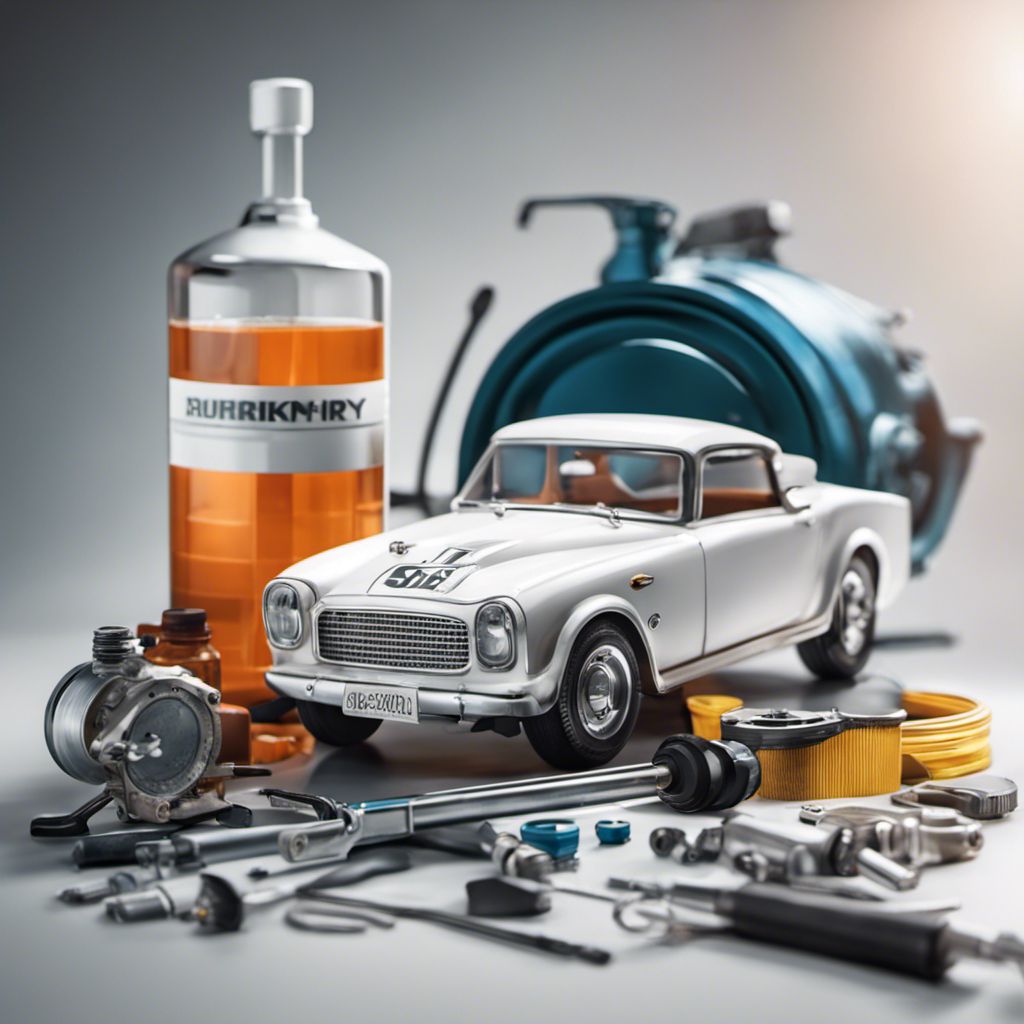Are you passionate about the excitement of ATV adventures but occasionally concerned about the state of your brakes? Rest assured, you are not alone in this. Recognizing the need to meld enjoyment with safety in these thrilling pursuits, we have delved deeply into studies on regular ATV brake fluid upkeep – an essential element for optimal brake functionality.
Buckle up for an enlightening journey featuring insights on the significance of this maintenance task and its timing, detailed DIY instructions and some cues hinting at those occasional instances when expert intervention might be needed.
So, are you ready to fuel your knowledge on this subject? Let’s rev up and hit the trail!
Key Takeaways
- Brake fluid is key for our ATV’s brake system. We must change it every two years for safety.
- If the brake fluid looks dirty or smells burned, we need to change it right away.
- Bleeding your brakes gets rid of old fluid. Do this about once a year to keep the braking system healthy and safe.
- Taking care of our ATV’s brake fluid isn’t easy. It takes skills and special tools. We can get an expert’s help if needed!
What is Brake Fluid and Why is it Important?

Brake fluid is a type of hydraulic fluid that allows your ATV’s braking system to function properly. It boasts hygroscopic properties, which means it can absorb moisture from the air—an essential feature for preventing corrosion in your brake pipes.
However, its boiling temperature decreases as it ages due to water absorption, potentially affecting the performance of ABS and traction control systems if not regularly replaced. So while it might seem insignificant, brake fluid plays a crucial role in maintaining your ATV’s safety and performance standards.
Brake fluid overview
Brake fluid is key for our ATV’s brake system. It helps us stop when we need to. The fluid has special stuff in it called corrosion inhibitors and antioxidants. These help keep the brake system safe from rust and last longer.
But here’s a thing you should know: if the brake fluid gets too old, it can boil! And when it does, your brakes may not work right. That’s scary! So, we must change this fluid every two years or so for safety.
Hygroscopic properties
Brake fluid has hygroscopic properties. This is a big word that means it can soak up moisture from the air. Wet brake fluid leads to rust and corrosion in your ATV’s braking system, which is bad news! We need to keep these parts dry and clean so they work well.
Changing brake fluid often is key for our ATVs. It stops moisture absorption as the fluid ages, keeping brakes healthy. Without regular service, brake fluids can become less effective over time.
So checking and changing this vital liquid every two years helps prevent water problems.
Lowered boiling temperature with age
Brake fluid gets old with time. As it ages, the boiling point drops. This is bad for our ATVs. A high boiling point lets brake fluid fight off the heat from the brakes. If brake fluid boils, it turns to gas and doesn’t work well.
We can lose control of our ATVs when this happens. So, keep your brake fluid fresh!
Effects of degraded fluid on ABS and traction control systems
Bad brake fluid hurts your ATV’s ABS and traction control systems. Heat from these systems can make the fluid go bad faster. This makes it even more important to swap out old brake fluid often.
The stuff in brake fluid that stops rust can mix with too much water and cause problems instead. Too much moisture also leads to rust in your ABS and traction control systems. Your brakes may lock up if this happens! So, you need clean, good quality brake fluid for these parts of your ATV to work as they should.
When Should You Change Brake Fluid?

Changing your brake fluid isn’t just a once-in-a-lifetime task; it needs to be done regularly. Check your ATV manufacturer’s recommendation for timing, but also look out for signs of wear and contamination in the fluid.
Stay with us as we dive deeper into understanding these indicators and their significance in the maintenance of your ATV braking system.
Schedule as per manufacturer’s recommendation
We follow the maker’s manual for ATV brake fluid upkeep. Many suggest changing the fluid every two years or 24,000 miles, depending on what comes first. Some say change it every three years or after 45,000 miles.
Not all ATVs are the same though. The maintenance schedule can be different based on your vehicle and how you use it. Thus, always checking with your ATV manufacturer is a smart move.
They give you a mileage-based schedule to help keep your ride safe and sound.
Changing brake fluid often is key in keeping brakes working right. This will also make sure our ride stops when we want it to! A good tip is to flush the brake system fully every two years at least but some might need a change sooner than that based on usage and riding conditions.
Keeping up with regular brake fluid service gives us confidence in our rides and keeps us safer out there!
Signs of needing a brake fluid replacement
We need to watch for signs that tell us it’s time to change our brake fluid. Here are some key things we might notice:
- Our brake pedal feels soft or unresponsive.
- We spot leaks near the wheels. They could be light yellow or brown.
- The brake fluid looks dirty or murky.
- There’s a burned smell coming from the brakes.
- Other strange things are happening with our brakes.
How Often Should You Bleed Your ATV Brakes?
Bleeding your ATV brakes regularly is critical for maintaining the performance and safety of your ride, with suggested intervals varying based on usage and riding conditions. Dive into our article to get a comprehensive handling of this crucial maintenance routine!
Importance of regular brake fluid maintenance
Taking care of your brake fluid is a must. It keeps your ATV brakes working their best. Over time, the brake fluid can pull in moisture. This makes it not work as well. It means we must change it often for our ATVs to stay safe and sound on the trails.
Bleeding the brakes gets rid of old fluid and lets new fluid flow better through the lines. We should do this about every 10,000 miles or once a year, whichever comes first.
Recommended intervals for bleeding brakes
We need to bleed the brakes on our ATVs often. It’s good to do this at least once during the summer months. This is especially true for us if we race a lot. If we don’t, dirt and air can get in our brake lines.
Another good rule is to change the brake fluid each time we change the brake pads. We should aim for every 30,000 miles as well. By doing this regularly, it helps keep our ATV performing well and safe to use.
Steps for Bleeding ATV Brakes
We’ll dive into the various methods for bleeding ATV brakes, including manual, vacuum or reverse bleeding. Stay tuned to learn how each technique can ensure optimal brake performance and safety.
Manual method
We can teach you how to bleed your ATV brakes in a simple way. This is the manual method. It’s easy and needs nothing more than basic tools. All we have to do is pump the brake lever or pedal over again.
This will push out air bubbles from the brake system. We don’t need a hand pump for this task, which makes it even easier! Plus, it helps us change old brake fluid with new one effortlessly.
The manual method works great for anyone, even on a slow weekend ride!
Vacuum bleeding method
We use the vacuum bleeding method to keep our ATV brakes in great shape. First, we create a space with no air or “vacuum” in the brake lines. We do this with a tool known as a vacuum pump.
After that, we draw out the old fluid and any unwanted stuff like air or water. This siphoning action helps clean up our brake system. The result is better performance and safety on all rides! It’s an easy way for us to take care of our ATVs’ braking system regularly.
Reverse bleeding method
We want to share about another way of brake bleeding. It’s called the reverse bleeding method. In this, we push fresh brake fluid into the bleeder valve and out from the caliper.
First, link a syringe filled with brake fluid to the caliper’s bleed valve. Next, open this bleed valve and push fluid toward the master cylinder. Guess what? This takes away air from your ATV’s brake system! With reverse bleeding, your brakes get better because they use special braking mechanisms.
Plus, you don’t have any problem pushing fluid through paths in your braking system.
Why Hire Professionals for Brake Fluid Maintenance
Brake fluid maintenance might seem easy, but it requires expertise and the right equipment. Professionals understand necessary procedures, such as ensuring brake lines are properly bled and fluid is correctly replaced.
This guarantees your ATV operates safely while preventing premature wear on vital parts of the brake system. Remember, there’s no substitute for professional servicing when it comes to maintaining your ride’s integrity!
Expertise and equipment
We know how to look after your ATV’s brakes. We have the right skills and tools to do it well. Brake fluid change is not easy. It can be risky if you don’t know what you’re doing. You need expert skill and special tools for this job.
If we do the work, your ATV will brake better and safer too. To keep you safe while riding, let us handle your brake fluid service needs.
Ensuring proper bleeding and replacement
We can’t stress enough the need for proper bleeding and replacement of brake fluid in your ATV.
- Look out for a cloudy or milky brake fluid color. This shows debris buildup in the brake fluid.
- A regular schedule helps you make timely brake fluid changes. This stops dirt from lowering your brake power.
- Always bleed your brakes as part of your brake system maintenance. It removes air pockets that slow down braking.
- Make use of professional brake fluid maintenance services if you are unsure. They will have all the right tools and know-how.
- Proper brake fluid replacement can bring back full power to your brakes.
- Keeping up with this task is a big part in prolonging lifespan of braking system.
- Flushing brake lines gets rid of old, dirty fluid and helps give better braking power.
Conclusion
We all need our ATVs to work well and keep us safe. This is why we must take care of the brake fluid. Let’s make it a habit to check it often, clean it up and change when needed. It’s not hard, and there are ways to do it yourself or get help if needed!
FAQs
1. Why should I change the brake fluid in my ATV?
Changing your ATV’s brake fluid is crucial because it keeps your brakes working well and safe for use.
2. How often do I need to replace the brake fluid?
It is best to replace the brake fluid in your ATV once a year or after every 1,000 miles of usage.
3. Can I check my ATV’s brake fluid on my own?
Yes, you can check the color and level of your ATV’s brake fluid through its clear reservoir easily at home.
4. Do all ATVs use the same type of brake fluid?
No, different ATVs may require different types of brake fluids; always refer to your owner’s manual for specifics.
5. What happens if I don’t maintain my ATV’s brake fluid regularly?
If you don’t maintain your ATF’s break fluids regularly, it could lead to poor braking performance or even cause complete system failure.

